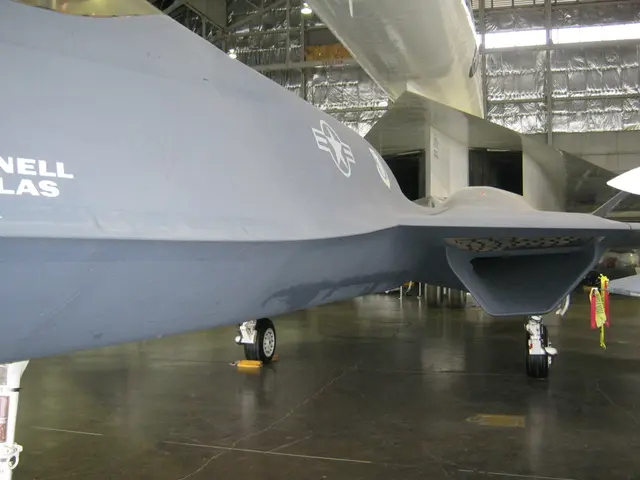Airship Duration: Revealing the Extent of Blimp Journeys
Blimps, those iconic airships that grace the skies, have a fascinating range that's influenced by a variety of factors. From their design to the weather conditions, a blimp's maximum flight distance is a complex equation that's worth exploring.
The range of a blimp is determined by several key factors. These include the engine and fuel parameters, aerodynamic design, helium usage, weather conditions, altitude limits, and operational considerations.
Engine efficiency and fuel capacity play a significant role. For instance, the latest Goodyear blimps use three Lycoming IO-360 engines, each providing 200 horsepower, and can cruise up to 73 mph with a range of 486 nautical miles and a 24-hour endurance if needed.
The shape and size of the blimp affect drag, while the weight of the crew, passengers, and equipment impact fuel consumption and overall range. Helium management is critical, as it's used for lift. Goodyear blimps maintain proper lift by adjusting for altitude and temperature changes.
Weather conditions, particularly wind, are a critical factor. Tailwinds can significantly increase effective range, while headwinds reduce it. The wind's strength and direction relative to the blimp's course are major factors influencing total flight distance.
Regulatory and operational limits can also impact a blimp's range. Certain operational modes, like IFR certification for instrument flight rules, affect when and how the blimp can operate, indirectly influencing achievable distance.
Ongoing research into aerodynamic design is leading to more efficient blimp shapes and structures, reducing drag and improving fuel efficiency. More efficient engines, aerodynamic designs, and lighter materials contribute to lower fuel consumption, extending the blimp's range.
Advancements in technology, such as hybrid propulsion, alternative fuels, and aerodynamic improvements, promise to significantly extend the range of future airships. Alternative fuels, like biofuels and hydrogen, offer the potential to reduce the environmental impact of airship travel and extend blimp range.
Integrating solar panels into the blimp's envelope offers the potential to generate electricity and supplement the propulsion system. Autonomous blimps can optimise flight paths and speeds to maximise fuel efficiency.
The future of blimp range is promising. With advancements in hybrid propulsion systems, alternative fuels, aerodynamic improvements, solar power integration, and more efficient designs, the skies may soon see blimps travelling further than ever before.
Examples of blimp range include Goodyear blimps, which typically have a range of around 600-750 miles, and larger airships designed for cargo transport or surveillance, which can have significantly greater ranges. A blimp's cruising altitude significantly affects its endurance due to variations in air density and wind conditions.
In conclusion, the maximum flight distance of a blimp is a complex equation that depends on a combination of engine/fuel parameters, aerodynamic design, helium usage, weather conditions, altitude limits, and operational considerations. Understanding these factors can help us appreciate the incredible potential of these airborne wonders.
- Future advancements in technology, such as hybrid propulsion, alternative fuels, and solar energy integration, could potentially extend the range of blimps beyond current limits, making them more efficient and environmentally friendly.
- The range of blimps, like the Goodyear blimps, can exceed 600-750 miles, and larger airship designs used for cargo transport or surveillance can have significantly greater ranges, demonstrating the impressive potential of these vehicles in various applications.




